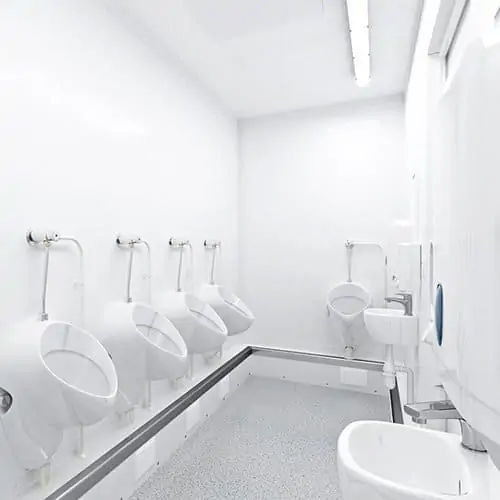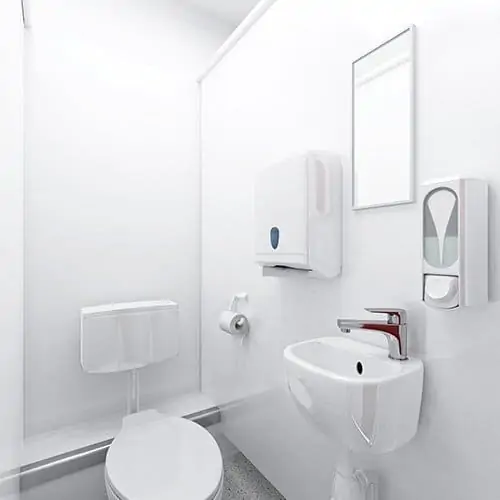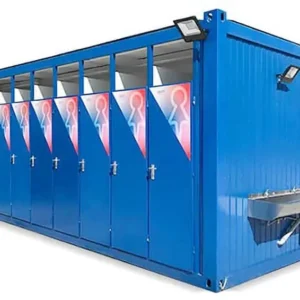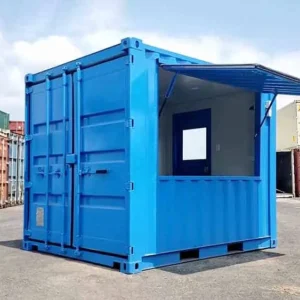Description
Prefab Container Toilet
Designing a prefab container toilet involves creating a compact, portable, and easily assembled sanitation solution. Here are key features and considerations for designing a prefab container toilet:
Container Selection:
- Compact Size:
- Choose a small shipping container, such as a 10 or 20-foot container, for a portable toilet solution.
- Optimize the interior layout to accommodate necessary fixtures and utilities.
Interior Design: 2. Functional Layout:
- Design a functional layout that includes a toilet fixture, sink, and storage.
- Optimize space for ease of use and accessibility.
- Sanitary Fixtures:
- Select sanitary fixtures that are compact and easy to clean.
- Consider using water-saving and energy-efficient fixtures.
Utilities and Systems: 4. Plumbing and Water Supply:
- Implement a simple and efficient plumbing system for waste disposal.
- Ensure easy connection to a water supply for flushing and handwashing.
- Ventilation:
- Include proper ventilation to ensure air circulation and prevent odors.
- Consider passive ventilation methods or small exhaust fans.
Exterior Features: 6. Durability:
- Use durable and weather-resistant materials for the exterior.
- Ensure the container is resistant to corrosion and can withstand outdoor conditions.
- Easy Maintenance:
- Design the exterior for easy cleaning and maintenance.
- Consider smooth surfaces and materials that resist staining.
Mobility and Transportation: 8. Compact for Transportation:
- Ensure that the prefab container toilet is compact for transportation.
- Consider weight and dimensions to comply with transportation regulations.
- Mobility Features:
- Include handles or lifting points for easy loading and unloading.
- Ensure compatibility with common transportation methods like trucks or trailers.
Accessibility: 10. Universal Design: – Consider universal design principles for accessibility. – Ensure that the toilet is usable by people with diverse needs.
Off-Grid Options: 11. Solar Power: – If possible, consider incorporating solar panels for energy supply. – Use energy-efficient lighting to minimize power consumption.
User-Friendly Features: 12. User Instructions: – Provide clear instructions for users on how to operate the toilet. – Include signage or labels for ease of use.
Permits and Compliance: 13. Compliance with Regulations: – Ensure compliance with local health and safety regulations. – Obtain the necessary permits for installation and usage.
Cost Considerations: 14. Budget and Cost Efficiency: – Consider the overall cost, including transportation, installation, and maintenance. – Compare the costs of a prefab container toilet to traditional sanitation solutions.
Engage with professionals, including architects, engineers, and builders, to ensure the successful design and implementation of your prefab container toilet. Customization and adherence to local regulations are crucial for a functional and compliant sanitation solution.









Reviews
There are no reviews yet.